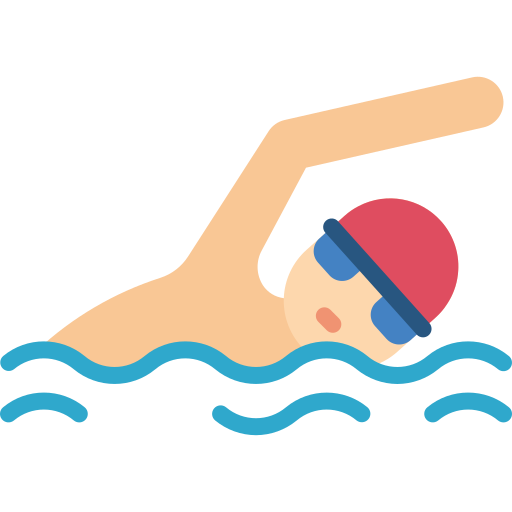Dive deep into the distinctions and master your swimming technique.
Are you ready to dive into the world of swimming strokes? Today, we'll unravel the mysteries of the backstroke and front stroke, two fundamental techniques that can elevate your swimming skills to new heights. Understanding the nuances between these strokes is key to perfecting your form and maximizing your aquatic performance. Let's start with the front stroke. This stroke, also known as the freestyle stroke, is similar to the backstroke in many ways. However, there's a crucial distinction—the front stroke involves swimming against the powerful pull of the water. To maintain balance and efficiency, it's essential to keep your head and spine aligned in a straight line. As with any stroke, it's important to start slowly and gradually increase your speed and endurance.

Let's explore the backstroke—the swimmer's flat-out adventure. In this stroke, you'll swim on your back, utilizing the buoyancy provided by the water to propel yourself forward. Imagine using the side of your back as a sturdy platform, generating the necessary lift to stay afloat. By creating parallel planes with your body, you enhance buoyancy, akin to a solid concrete plate. Achieving neutral buoyancy occurs when your head and shoulders rest comfortably on this metaphorical plate, allowing for smooth and streamlined movement. Mastering the backstroke and front stroke requires practice and attention to technique. While both strokes share similarities, they differ in the way swimmers interact with the water. The front stroke challenges you to swim against the water's force, using your strength and agility to move forward. On the other hand, the backstroke offers a unique experience, enabling you to harness the water's buoyant properties while maintaining stability.
🌈
Now, let's uncover the benefits of incorporating jump rope workouts into your fitness routine. Jumping rope is an exceptional exercise that provides a myriad of advantages for your overall fitness. Not only does it improve cardiovascular health, but it also enhances muscular strength, coordination, and agility. The rhythmic motion of jumping rope engages various muscle groups, including the legs, core, and shoulders, resulting in a comprehensive full-body workout. Jumping rope is a time-efficient exercise that yields remarkable results. Within a short period, you can burn significant calories and elevate your heart rate, making it an excellent choice for weight management and cardiovascular conditioning. Additionally, the versatility of jump rope training allows you to adapt the intensity and complexity according to your fitness level, ensuring a challenging workout that suits your needs. Embrace the joy and excitement of incorporating jump rope sessions into your fitness routine. By integrating this dynamic activity, you introduce an element of playfulness that keeps your workouts engaging and enjoyable.
😓
Jumping rope also provides a refreshing change of pace, breaking the monotony of traditional exercises and igniting your enthusiasm for physical fitness. Whether you're a beginner or an experienced athlete, training jump rope offers a fun and effective way to improve your overall health and well-being. In conclusion, mastering the backstroke and front stroke in swimming requires understanding their distinctions and refining your technique. Dive into the world of aquatic prowess and unlock your potential in the water. Additionally, don't forget to jump into the realm of jump rope training, reaping its numerous fitness benefits while infusing your workouts with energy and excitement. Get ready to make waves and achieve your fitness goals with style and grace.
🏄️